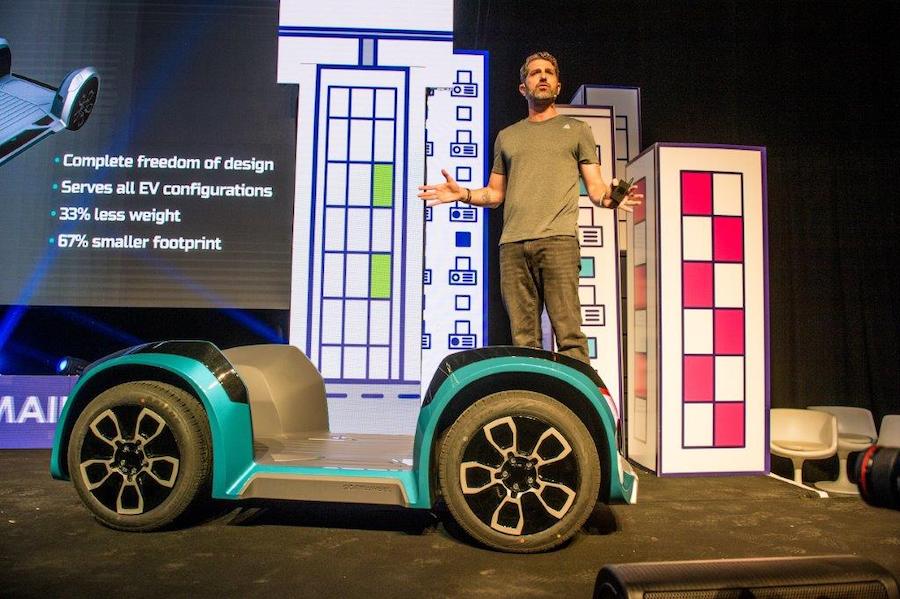Like the Principality of Monaco, Tel Aviv in Israel is a Smart City with an insatiable appetite for sustainable technology.
An important aspect of that is Smart Mobility, and for 10 years, EcoMotion Week has been bringing together entrepreneurs, academics, government officials, local and global automotive industry representatives, and investors for an event that is designed to grow the Israeli Smart Mobility sector.
Following the recent EcoMotion Week in May, Monaco Life spoke to the Co-Founder and Chairman of EcoMotion Week Meir Arnon about Smart Mobility, the surprising rapid advancement of driverless vehicles, and the future of flying cars.
Monaco Life: When did EcoMotion Week begin and why?
Meir Arnon: EcoMotion is an NGO that started 10 years ago in order to build an industry in Israel that was not there before – Smart Mobility. There are a lot of technologies coming from the defence industry, but not so much in other industries. So, we wanted to organise a yearly event that brings together thought leaders and actual global car makers. The first event attracted around 200 people; at the recent event, there were close to 5,000 – all carmakers and suppliers. It has become an event that the entire industry supports, and it now includes more than 600 start-ups in the Smart Mobility field. We have achieved what we wanted to in creating a new industry with lots of jobs and profits.
Of course, unfortunately during Covid, the 2020 and 2021 events were virtual, but they were nonetheless very successful with thousands of meetings and agreements between companies and start-ups.
Which field of Smart Mobility has excited and surprised you most throughout the decade?
When we started, we thought that the most exciting story we would be able to tell would be semi-autonomous driving, where a driver can relax a little and rely on some of the car sensors. We did not anticipate the speed in which this technology would actually be implemented. Regulation is of course very important, not just the technology, as well as customer acceptance. In the US today, over 70% of passengers are happy to drive in a fully-autonomous car, without a driver. If you were to ask the same question five years ago, it would probably be a third of that. So, one thing we saw coming is the semi-autonomous car, but it developed much faster than we thought.
The other is electrification. Arguably today, there is not one car company that has not committed to moving totally, or mostly, to electrification. Volvo was the first to announce that there would be no more internal combustion engines (ICE) in their cars by 2030, and by 2025, more than half will be electric. GM followed, saying that by 2030 more than half of their cars would be electric, then Ford did the same. If you had asked me five years ago, I would not have thought it would be so quick.
The reason for this speed is partly because, for the past five years, China has been dramatically subsidising electric cars because of the terrible pollution they have in their big cities. This accelerated the rest of the global car players. Meanwhile, five years ago, the battery industry in China was much more developed than that in Europe and the US. It is no longer the case, because many car makers – for example Tesla and many other car companies – have invested billions of dollars locally in battery manufacturing.
Another surprisingly speedy change is something that you or I could have only dreamed about – flying cars. And again, five years ago it was kind of like, “ok, good luck with that”. But today it has become centre stage. There are around 200 companies today with what we call EVTOL – electric, vertical take-off and landing. Of course, they have some challenges, but there are flying cars today that fly in the air and drive on the road. So, it parks in your garage, you fly to a short strip or private airport and you take off, you land somewhere and you continue to drive.
This whole world of electric helicopters and flying cars has moved very quickly, much quicker than most people anticipated. It reminds me of another time in history. If you look back 100 years ago in north America, there were 4,000 cars and 25 million horses. When asked what his customers wanted, Henry Ford was quoted as saying that his customers wanted faster horses. Nearly a century later, here we are with close to a billion cars globally. So, looking ahead, do we see flying cars? I think it will take perhaps 50 years, not 100. We will see less roads and infrastructure, and more autonomous flying cars in air corridors.
But what about the affordability of Smart Mobility?
By 2025, it will cost the same to produce a mini-cooper electric as a mini-cooper ICE.
Today, electric cars cost about 25% more to produce because they are less in numbers and there are parts that are costly today, but will not be costly tomorrow, such as the electric engine.
Now, let’s look at the reverse. An electric car has less than 1,000 parts. Normal cars today have ten times as many moving parts, and the moving parts are usually the problem. So, the fact is, electrification will eventually reduce the cost of cars.
With regards to autonomous cars, what today would cost you around $100,000 will cost a couple of thousand dollars five years from now.
Flying cars will continue to be expensive, but service in a flying car will be less costly. I don’t think flying cars will be targeted to everyone in the next five to 10 years, but they will come to prices that the average person can use. Not buy, but use for sure, like a taxi.
What range are we talking?
Today, flying cars are using normal ICE engines, but they will soon use batteries and become electric. We envision that, if the battery develops, a flying car is looking at short-haul trips of between 160 to 800 kilometres.
Technologies are allowing things that we could not imagine a few years ago. The fact that these flying cars will be autonomous, that’s for sure; and the fact that people are willing to step into an autonomous car or plane is now more accepted than, say, five years ago. It is not just the technology and the cost, but also the acceptance among people that they can rely on a “robot”.
What about cybersecurity? How much effort is being directed towards securing Smart Mobility?
There is a huge amount of work in this field. In Israel alone, there are more than 50 start-ups engaged in this field, some of whom were sold to Continental for over $500 million. It has been identified that once this technology becomes real and is no longer in the testing phase, the more security becomes a major issue, just like in normal aviation.
How is the aviation industry moving towards electrification?
The limitation today is battery performance. For example, there are currently seven or eight fully electric planes being tested but they have a range of maybe 160 kilometres.
But battery technology has also seen enormous advancement over the past 10 years. Kilowatts per dollar and kilowatts per kilogram have both dropped by a factor of 10 in the last five years, and continue to drop in that trajectory. So, it will get there. The world is working hard on clean energy, especially you guys there in Monaco.
What synergies do you see between Monaco and Israel?
I think Smart Mobility is very much linked to Smart City, and here in Israel we are working a lot of with the major principalities. The synergies between Monaco and Israel? Firstly, I would say that we are on the same ocean, so we should both take care of it. Secondly, Israel is full of technologies, Monaco is full of money – the challenge is to put the two together.
Top photo: Meir Arnon
"Smart Mobility has moved much faster than we anticipated"


